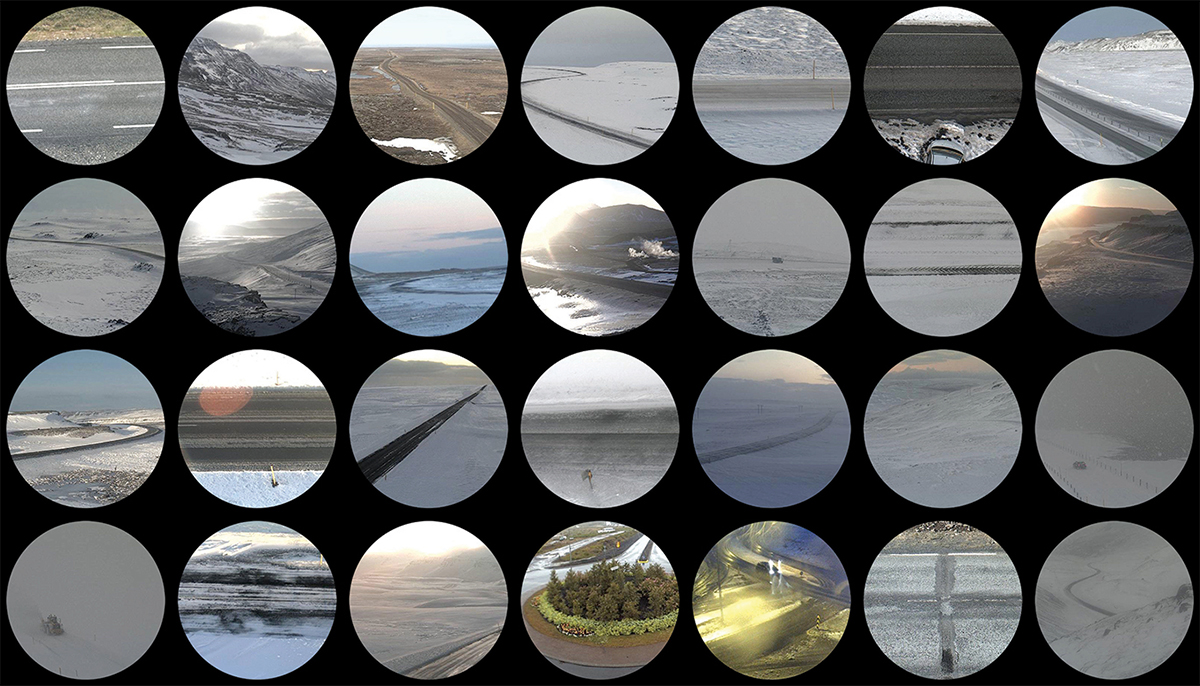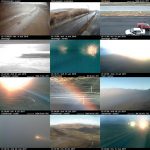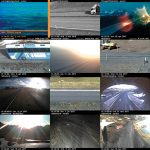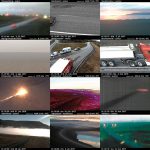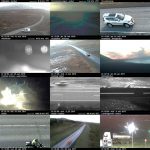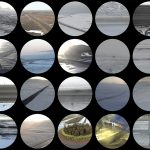PREMIERE ON SATURDAY 12 AUG 21:00
Spukhafte Fernwirkung involved manually collecting every photo uploaded to www.road.is—a website that uses a vast network of webcams to show the road and driving conditions of Iceland—each day for a year. I started collecting the images in early 2017 while undertaking a self-funded residency in Skagaströnd, Iceland, and finished collecting them a year later. I missed trudging around Iceland in my snow boots, so engaging with the landscape remotely was a way for me to stay connected to the country. Moreover, whereas the digital is dominated by metaphors of space, with terms like cyberspace or virtual reality, I was interested in time, because time is (digitally-speaking) ignored, or viewed as a frustration—the time it once took a dial-up modem to connect to the Internet, or how long it takes to download something. Nonetheless, while digital in nature, I view the work as a hybrid process between a (long durational) plain air painting and (post-capture) computer processing. The webcams are located perpetually outside, constantly capturing the landscape(s)—before I, in turn, captured their capturing of the digital terrain (pun intended).
